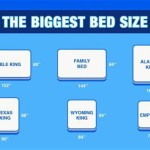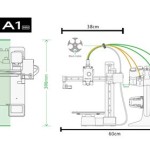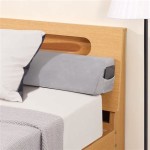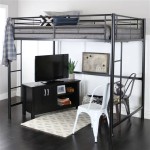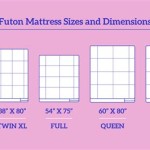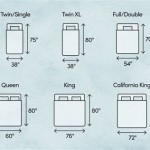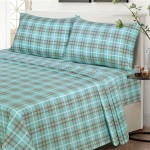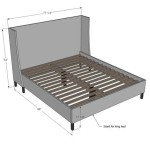Crib Mattress Size Bunk Beds: A Comprehensive Guide
Bunk beds offer a practical solution for maximizing space in rooms shared by children. Understanding crib mattress dimensions and how they relate to bunk bed safety and compatibility is crucial for parents and guardians. This article explores important considerations regarding crib mattress sizes within the context of bunk beds, providing a thorough guide for informed decision-making.
Standard Crib Mattress Dimensions
Standard crib mattresses measure approximately 27 1/4 inches wide by 51 1/4 inches long. These dimensions are regulated by federal safety standards to ensure a snug fit within a crib frame, minimizing the risk of entrapment hazards. Deviations from these standard dimensions are generally discouraged due to safety concerns.
Crib Mattresses and Bunk Bed Compatibility: Addressing the Safety Concerns
Using a crib mattress on a standard bunk bed is generally unsafe and not recommended. Standard bunk beds are designed for twin-size mattresses, significantly larger than crib mattresses. The size discrepancy creates gaps between the mattress and the bunk bed frame, posing a serious entrapment hazard for young children. A child could roll into the gap and become trapped, leading to suffocation or other injuries.
Toddler Beds and Bunk Bed Conversions
While standard crib mattresses should not be used on regular bunk beds, some manufacturers offer convertible crib-to-toddler bed systems. These systems often allow for the conversion of the crib into a low-lying toddler bed using the same crib mattress. It is crucial to ascertain that the manufacturer's instructions explicitly approve this conversion and that the crib mattress continues to fit snugly within the converted frame. Conversion kits that elevate the crib mattress to a bunk bed height are not considered safe and should be avoided.
Junior Bunk Beds and Crib Mattress Sizing
Junior bunk beds or low-loft beds designed specifically for toddlers and younger children present a different scenario. These beds are typically smaller than standard bunk beds and are often designed to accommodate crib-sized mattresses. Parents considering a junior bunk bed should carefully verify the manufacturer's specifications to ensure compatibility with a standard crib mattress. Checking for certifications and adherence to safety standards is also essential.
Safety Rails and Guardrails: Essential Components
Regardless of the bunk bed type, the presence of adequate safety rails and guardrails is paramount. These rails prevent children from rolling out of bed during sleep. For junior bunk beds or low-loft beds using a crib mattress, the guardrails should be high enough and securely attached to prevent falls. Regular inspection of these safety features is necessary to ensure they remain intact and functional.
Weight Limits and Mattress Support
Both standard and junior bunk beds have specified weight limits. It's crucial to adhere to these weight restrictions to prevent structural damage and potential injury. The mattress support system of the bunk bed should also be examined. Adequate slats or a solid platform are necessary to provide proper support for the mattress and prevent sagging, which could also contribute to entrapment hazards.
Transitioning from Crib to Bunk Bed: Age and Readiness
The decision to transition a child from a crib to a bunk bed, even a junior bunk bed, should not solely depend on age. Developmental readiness plays a crucial role. Children should demonstrate sufficient maturity and understanding of safety guidelines before transitioning to a bunk bed. Factors such as climbing ability, adherence to rules, and overall physical coordination should be considered.
Alternatives to Crib Mattress Bunk Beds
If a child is not ready for a bunk bed but space is limited, alternatives such as twin beds with trundle units or loft beds with play or storage space underneath can be explored. These options offer space-saving solutions while maintaining safety and accommodating the appropriate mattress size for growing children.
Importance of Manufacturer's Instructions
Consulting the manufacturer's instructions meticulously is crucial for any bunk bed, regardless of its size or configuration. These instructions provide specific guidelines on assembly, usage, weight limitations, and approved mattress sizes. Adhering to the manufacturer's recommendations ensures the safe and proper use of the bunk bed, minimizing potential risks and maximizing the longevity of the product.

Toddler Bunk Bed Do It Yourself Diy Plans Fits A Crib Size Mattress In India Etsy

Twin Bunk Bed For Kids With Steps Drawers Mattresses

Toddler Size Bunk Beds Space Saving With Kids The Minimalist Mom

Crib Size Mattress Toddler Bunk Bed Interior Furniture Vector Graphics Dxf For Laser Cnc And Milling Cutting Plan In India Etsy

Crib Size Mattress Bunk Beds

Bunk Bed Mattress Sizes A Guide For Safety And Comfort

Bunk Bed For Kids With Steps Ladder

Toddler Bunk Bed Do It Yourself Diy Plans Fits A Crib Size Mattress Etsy

Designer Bunk Beds For Kids Ssters

How We Made A Toddler Sized Bunk Bed For The Boys Free Plans Tutorial Diy Lazypondfarm

